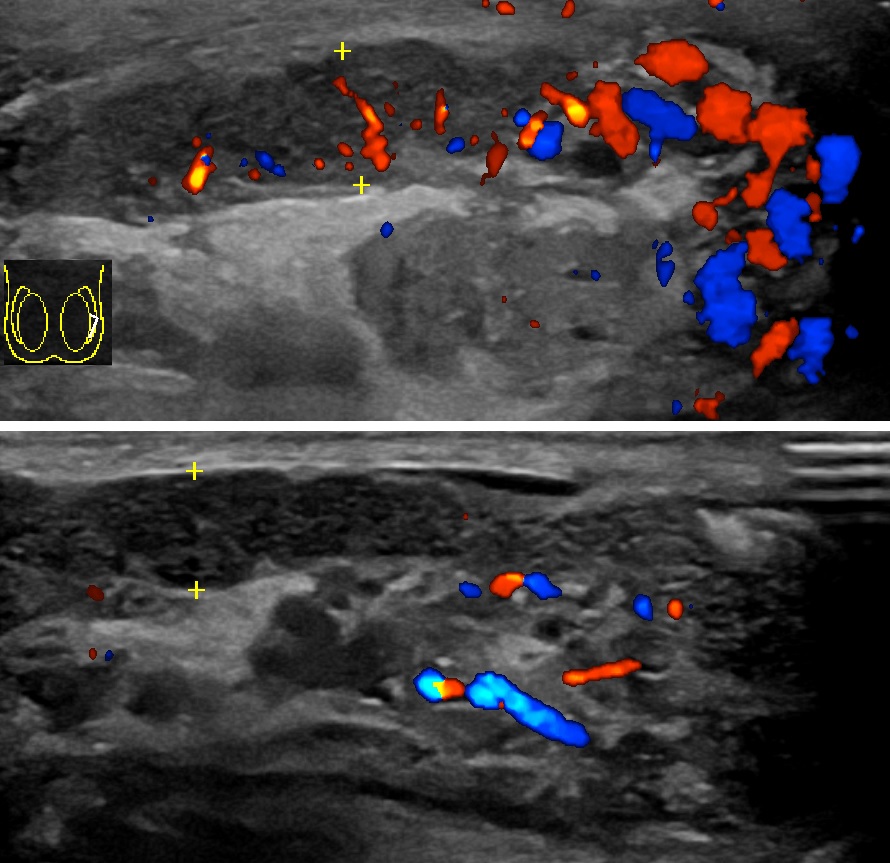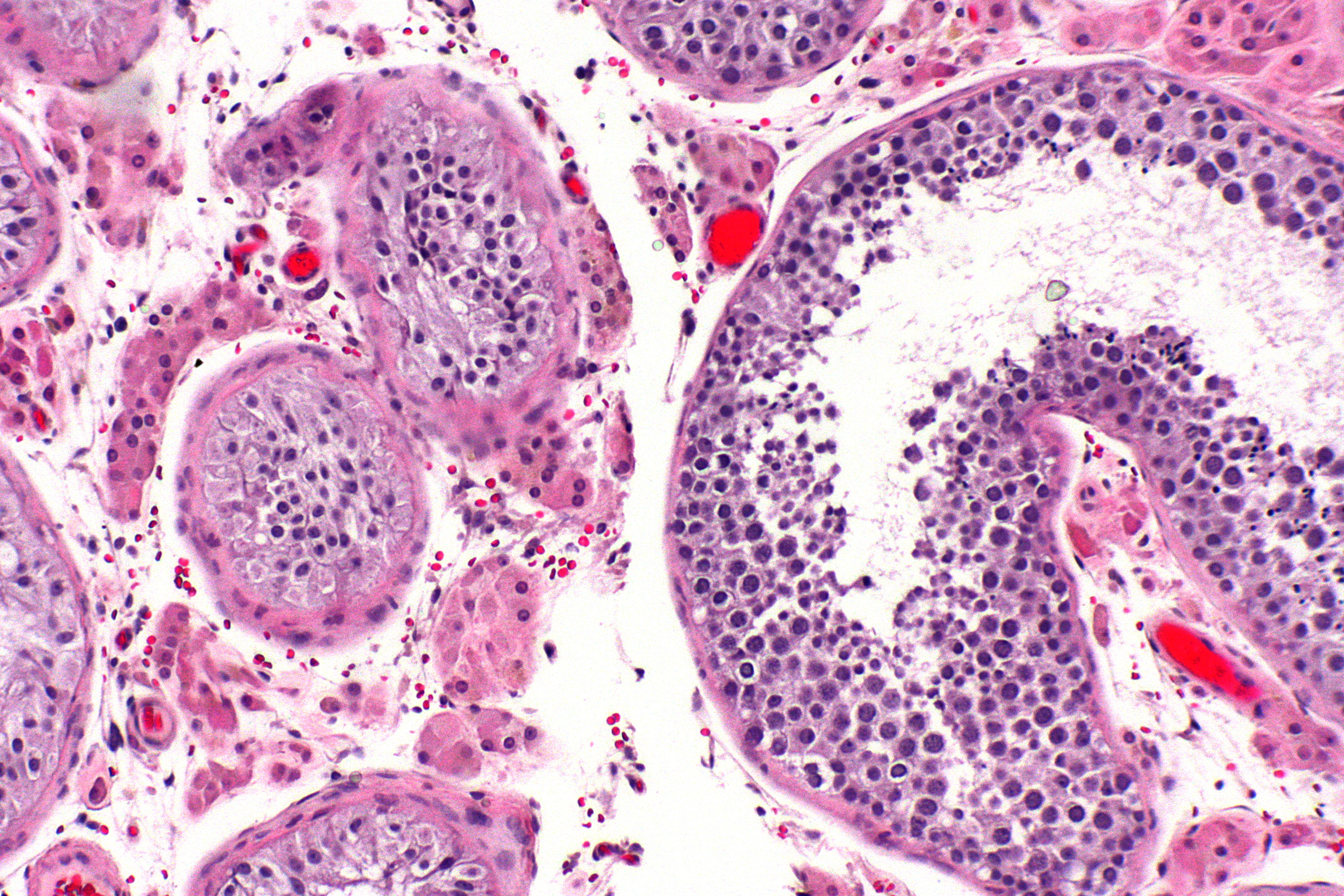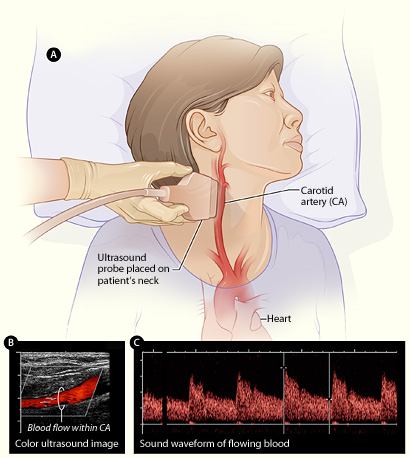|
Orchitis
Orchitis is inflammation of the testicles. It can also involve swelling, pains, and frequent infection, particularly of the epididymis, as in epididymitis. The term is from the Ancient Greek ὄρχις meaning "testicle"; same root as ''orchid''. Signs and symptoms Symptoms of orchitis are similar to those of testicular torsion. These can include: * hematospermia (blood in the semen) * hematuria (blood in the urine) * severe pain * visible swelling of a testicle or testicles and often the inguinal lymph nodes on the affected side. Causes Orchitis can be related to epididymitis infection that has spread to the testicles (then called "epididymo-orchitis"), sometimes caused by the sexually transmitted infections chlamydia and gonorrhea. It has also been reported in cases of males infected with brucellosis. Orchitis can also be seen during active mumps, particularly in adolescent boys and girls. Ischemic orchitis may result from damage to the blood vessels of the spermatic ... [...More Info...] [...Related Items...] OR: [Wikipedia] [Google] [Baidu] |
Epididymitis
Epididymitis is a medical condition characterized by inflammation of the epididymis, a curved structure at the back of the testicle. Onset of pain is typically over a day or two. The pain may improve with raising the testicle. Other symptoms may include swelling of the testicle, burning with urination, or frequent urination. Inflammation of the testicle is commonly also present. In those who are young and sexually active, gonorrhea and chlamydia are frequently the underlying cause. In older males and men who practice insertive anal sex, enteric bacteria are a common cause. Diagnosis is typically based on symptoms. Conditions that may result in similar symptoms include testicular torsion, inguinal hernia, and testicular cancer. Ultrasound can be useful if the diagnosis is unclear. Treatment may include pain medications, NSAIDs, and elevation. Recommended antibiotics in those who are young and sexually active are ceftriaxone and doxycycline. Among those who are older, ofloxaci ... [...More Info...] [...Related Items...] OR: [Wikipedia] [Google] [Baidu] |
Testicular Atrophy
Testicular atrophy is a medical condition in which one or both testicles (or "testes") diminish in size and may be accompanied by reduced testicular function. Testicular atrophy is not related to the temporary shrinkage of the surrounding scrotum, which might occur in response to cold temperature. As the testicles are involved in testosterone and sperm production, the signs and symptoms of testicular atrophy overlap with those related to infertility or low testosterone levels. In a prepubescent person with testicular atrophy, there may be underdevelopment of secondary sex characteristics (e.g. lack of penis growth). In sexually developed individuals, testicular atrophy may be accompanied with lower sex drive and increased breast tissue. Additional signs and symptoms vary and can depend on the specific cause of the testicle shrinkage. Some causes include age, alcohol use, anabolic steroid use, testosterone replacement therapy, direct damage to the testicles, and infection. Diagnosi ... [...More Info...] [...Related Items...] OR: [Wikipedia] [Google] [Baidu] |
Testicles
A testicle or testis ( testes) is the gonad in all male bilaterians, including humans, and is homologous to the ovary in females. Its primary functions are the production of sperm and the secretion of androgens, primarily testosterone. The release of testosterone is regulated by luteinizing hormone (LH) from the anterior pituitary gland. Sperm production is controlled by follicle-stimulating hormone (FSH) from the anterior pituitary gland and by testosterone produced within the gonads. Structure Appearance Males have two testicles of similar size contained within the scrotum, which is an extension of the abdominal wall. Scrotal asymmetry, in which one testicle extends farther down into the scrotum than the other, is common. This is because of the differences in the vasculature's anatomy. For 85% of men, the right testis hangs lower than the left one. Measurement and volume The volume of the testicle can be estimated by palpating it and comparing it to ellipsoids (an o ... [...More Info...] [...Related Items...] OR: [Wikipedia] [Google] [Baidu] |
Testicle
A testicle or testis ( testes) is the gonad in all male bilaterians, including humans, and is Homology (biology), homologous to the ovary in females. Its primary functions are the production of sperm and the secretion of Androgen, androgens, primarily testosterone. The release of testosterone is regulated by luteinizing hormone (LH) from the anterior pituitary gland. Sperm production is controlled by follicle-stimulating hormone (FSH) from the anterior pituitary gland and by testosterone produced within the gonads. Structure Appearance Males have two testicles of similar size contained within the scrotum, which is an extension of the abdominal wall. Scrotal asymmetry, in which one testicle extends farther down into the scrotum than the other, is common. This is because of the differences in the vasculature's anatomy. For 85% of men, the right testis hangs lower than the left one. Measurement and volume The volume of the testicle can be estimated by palpating it and compari ... [...More Info...] [...Related Items...] OR: [Wikipedia] [Google] [Baidu] |
Brucellosis
Brucellosis is a zoonosis spread primarily via ingestion of raw milk, unpasteurized milk from infected animals. It is also known as undulant fever, Malta fever, and Mediterranean fever. The bacteria causing this disease, ''Brucella'', are small, Gram-negative, nonmotile, nonspore-forming, rod-shaped (Coccobacillus, coccobacilli) bacteria. They function as Facultative parasite, facultative intracellular parasites, causing Chronic (medicine), chronic disease, which usually persists for life. Four species infect humans: ''B. abortus'', ''B. canis'', ''B. melitensis'', and ''B. suis''. ''B. abortus'' is less virulent than ''B. melitensis'' and is primarily a disease of cattle. ''B. canis'' affects dogs. ''B. melitensis'' is the most virulent and invasive species; it usually infects goats and occasionally sheep. ''B. suis'' is of intermediate virulence and chiefly infects pigs. Symptoms include Diaphoresis, profuse sweating and Arthralgia, joint and Myalgia, muscle pain. Brucellosis h ... [...More Info...] [...Related Items...] OR: [Wikipedia] [Google] [Baidu] |
Chlamydia Infection
Chlamydia, or more specifically a chlamydia infection, is a sexually transmitted infection caused by the bacterium ''Chlamydia trachomatis''. Most people who are infected have no symptoms. When symptoms do appear, they may occur only several weeks after infection; the incubation period between exposure and being able to infect others is thought to be on the order of two to six weeks. Symptoms in women may include vaginal discharge or burning with urination. Symptoms in men may include discharge from the penis, burning with urination, or pain and swelling of one or both testicles. The infection can spread to the upper genital tract in women, causing pelvic inflammatory disease, which may result in future infertility or ectopic pregnancy. Chlamydia infections can occur in other areas besides the genitals, including the anus, eyes, throat, and lymph nodes. Repeated chlamydia infections of the eyes that go without treatment can result in trachoma, a common cause of blindness ... [...More Info...] [...Related Items...] OR: [Wikipedia] [Google] [Baidu] |
Naproxen
Naproxen, sold under the brand name Aleve among others, is a nonsteroidal anti-inflammatory drug (NSAID) used to treat pain, menstrual cramps, and inflammatory diseases such as rheumatoid arthritis, gout and fever. It is taken orally. It is available in immediate and delayed release formulations. Onset of effects is within an hour and lasts for up to twelve hours. Naproxen is also available in salt form, naproxen sodium, which has better solubility when taken orally. Common side effects include dizziness, headache, bruising, allergic reactions, heartburn, and stomach pain. Severe side effects include an increased risk of heart disease, stroke, gastrointestinal bleeding, and stomach ulcers. The heart disease risk may be lower than with other NSAIDs. It is not recommended in people with kidney problems. Use is not recommended in the third trimester of pregnancy. Naproxen is a nonselective COX inhibitor. As an NSAID, naproxen appears to exert its anti-inflammator ... [...More Info...] [...Related Items...] OR: [Wikipedia] [Google] [Baidu] |
Non-steroidal Anti-inflammatory Drugs
A nonsteroidal compound is a drug that is not a steroid nor a steroid derivative. Nonsteroidal anti-inflammatory drugs (NSAIDs) are distinguished from corticosteroids as a class of anti-inflammatory agents. List of nonsteroidal steroid receptor modulators Examples include the following: * Estrogens: benzestrol, bifluranol, estrobin (DBE), diethylstilbestrol (stilbestrol), dienestrol, erteberel, fosfestrol, hexestrol (dihydroxystilbestrol), methallenestril, methestrol, methestrol dipropionate, paroxypropione, prinaberel, and triphenylethylene, as well as many xenoestrogens * : acolbifene, afimoxifene, arzoxifene, bazedoxifene, broparestrol, chlorotrianisene, clomifene, clomifenoxide, cyclofenil, droloxifene, enclomifene, endoxifen, ethamoxytriphetol, fispemifene, idoxifene, lasofoxifene, levormeloxifene, miproxifene, nafoxidine, nitromifene, ormeloxifene, ospemifene, panomifene, pipendoxifene, raloxifene, tamoxifen, toremifene, trioxifene, ... [...More Info...] [...Related Items...] OR: [Wikipedia] [Google] [Baidu] |
Ciprofloxacin
Ciprofloxacin is a fluoroquinolone antibiotic used to treat a number of bacterial infections. This includes bone and joint infections, intra-abdominal infections, certain types of infectious diarrhea, respiratory tract infections, skin infections, typhoid fever, and urinary tract infections, among others. For some infections it is used in addition to other antibiotics. It can be taken by mouth, as eye drops, as ear drops, or intravenously. Common side effects include nausea, vomiting, and diarrhea. Severe side effects include tendon rupture, hallucinations, and nerve damage. In people with myasthenia gravis, there is worsening muscle weakness. Rates of side effects appear to be higher than some groups of antibiotics such as cephalosporins but lower than others such as clindamycin. Studies in other animals raise concerns regarding use in pregnancy. No problems were identified, however, in the children of a small number of women who took the medication. It appear ... [...More Info...] [...Related Items...] OR: [Wikipedia] [Google] [Baidu] |
Cefalexin
Cefalexin, also spelled cephalexin, is an antibiotic that can treat a number of bacterial infections. It kills gram-positive and some gram-negative bacteria by disrupting the growth of the bacterial cell wall. Cefalexin is a β-lactam antibiotic within the class of first-generation cephalosporins. It works similarly to other agents within this class, including intravenous cefazolin, but can be taken by mouth. Cefalexin can treat certain bacterial infections, including those of the middle ear, bone and joint, skin, and urinary tract. It may also be used for certain types of pneumonia and strep throat and to prevent bacterial endocarditis. Cefalexin is not effective against infections caused by methicillin-resistant ''Staphylococcus aureus'' (MRSA), most ''Enterococcus'', or ''Pseudomonas''. Like other antibiotics, cefalexin cannot treat viral infections, such as the flu, common cold or acute bronchitis. Cefalexin can be used in those who have mild or moderate allergies to pe ... [...More Info...] [...Related Items...] OR: [Wikipedia] [Google] [Baidu] |
Ultrasonography Of Orchitis
Medical ultrasound includes Medical diagnosis, diagnostic techniques (mainly medical imaging, imaging) using ultrasound, as well as therapeutic ultrasound, therapeutic applications of ultrasound. In diagnosis, it is used to create an image of internal body structures such as tendons, muscles, joints, blood vessels, and internal organs, to measure some characteristics (e.g., distances and velocities) or to generate an informative audible sound. The usage of ultrasound to produce visual images for medicine is called medical ultrasonography or simply sonography, or echography. The practice of examining pregnant women using ultrasound is called obstetric ultrasonography, and was an early development of clinical ultrasonography. The machine used is called an ultrasound machine, a sonograph or an echograph. The visual image formed using this technique is called an ultrasonogram, a sonogram or an echogram. Ultrasound is composed of sound waves with frequency, frequencies greater than ... [...More Info...] [...Related Items...] OR: [Wikipedia] [Google] [Baidu] |
Hernia Repair
Hernia repair is a surgical operation for the correction of a hernia—a bulging of internal organs or tissues through the wall that contains it. It can be of two different types: herniorrhaphy; or hernioplasty. This operation may be performed to correct hernias of the abdomen, groin, diaphragm, brain, or at the site of a previous operation. Hernia repair is often performed as an ambulatory procedure. Techniques Inguinal hernia repair The first differentiating factor in hernia repair is whether the surgery is done open, or laparoscopically. Open hernia repair is when an incision is made in the skin directly over the hernia. Laparoscopic hernia repair is when minimally invasive cameras and equipment are used and the hernia is repaired with only small incisions adjacent to the hernia. These techniques are similar to the techniques used in laparoscopic gallbladder surgery. An operation in which the hernia sac is removed without any repair of the inguinal canal is described as ... [...More Info...] [...Related Items...] OR: [Wikipedia] [Google] [Baidu] |








